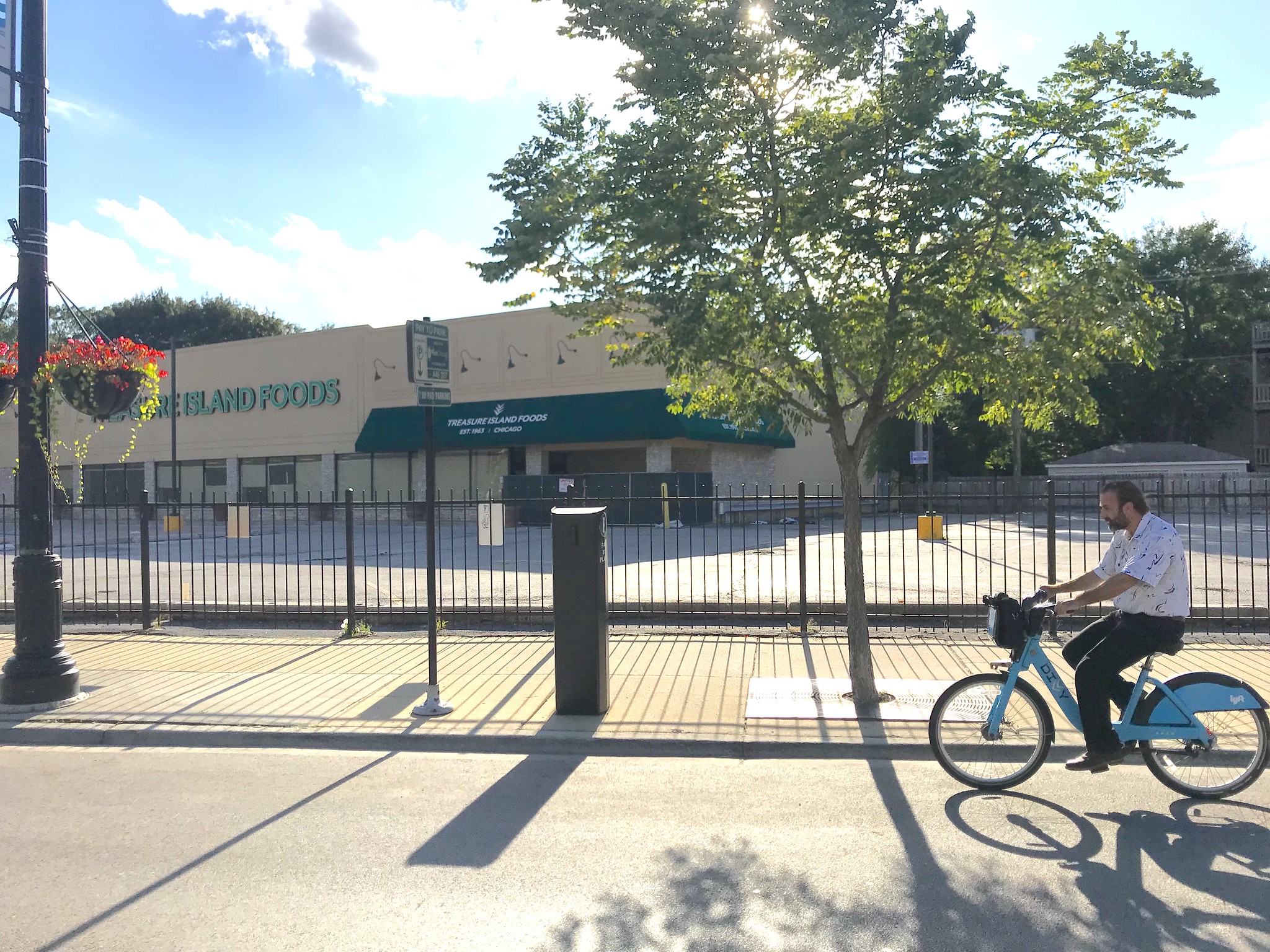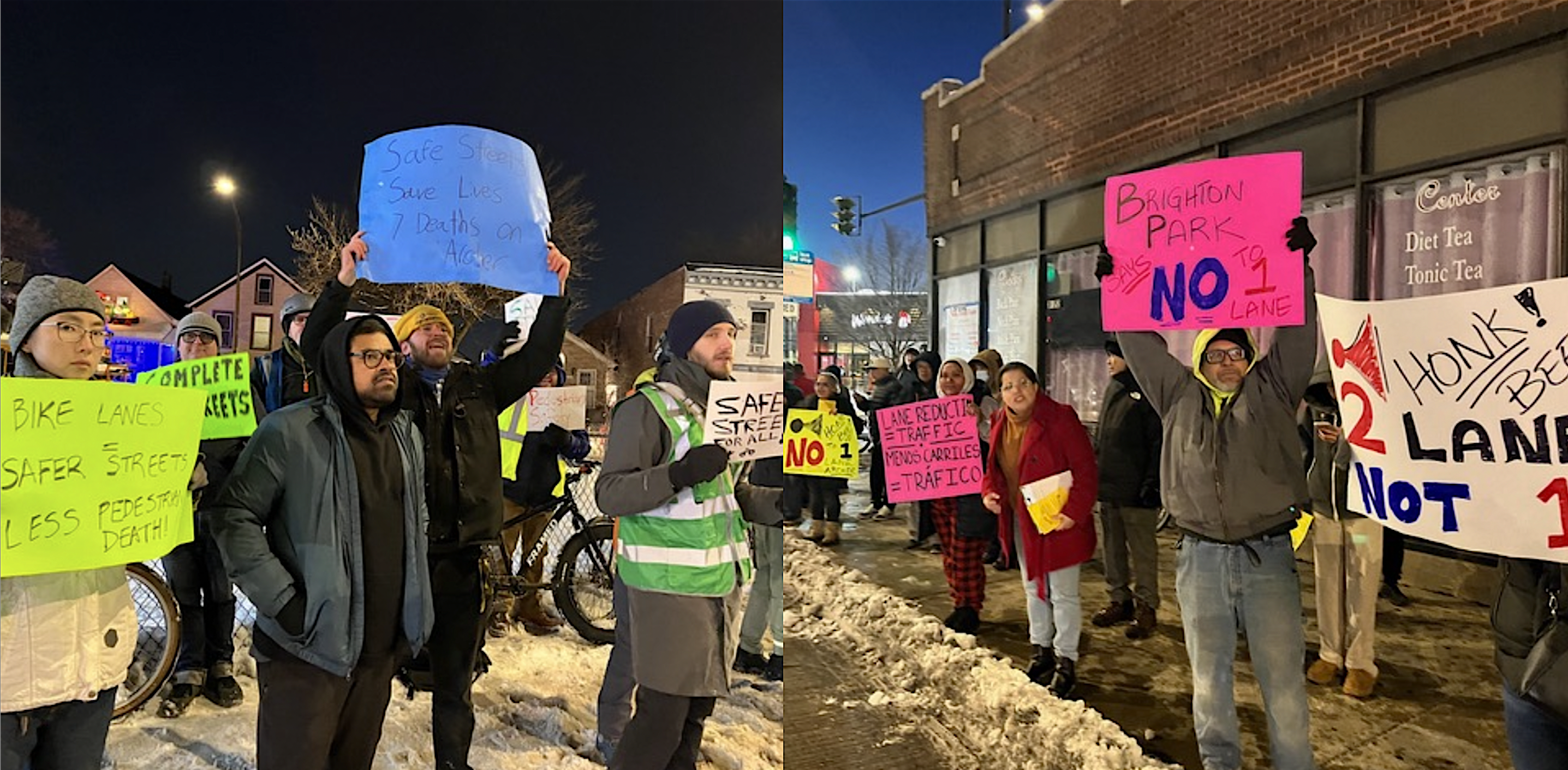[This piece previously ran in the Chicago Reader]
Last month at the UN's Climate Action Summit, 16-year-old activist Greta Thunberg had a stern warning about global warming for world leaders and, by extension, city politicians and adults in general: "The eyes of all future generations are upon you. And if you choose to fail us, I say: We will never forgive you."
One of the simplest things individuals can do to fight climate change is drive less, or not at all. That's relatively easy in much of Chicago, where there are a wealth of alternatives to private car ownership: walking, biking, Divvy, e-scooters, CTA, Metra, Zipcar, taxis, and ride hailing. It's especially convenient to live "car lite" or car free if you live near a train station or express bus service.
Recently the City Council took an important step to address global warming by encouraging transit use and discouraging driving. Aldermen passed a transit-oriented development ordinance that allows additional housing density and essentially waives the usual off-street car parking requirements for new developments within a quarter mile of rapid transit stops or a half mile on designated "Pedestrian Streets."
The resulting transit-oriented development boom, which has mostly involved upscale projects, has been blamed for accelerating housing displacement in gentrifying neighborhoods like Logan Square. And it's true the city needs to work harder to promote affordable TOD across Chicago, so that residents of all income levels can benefit from easier transit access.
But gentrification isn't much of an issue in already affluent communities like East Lakeview. Therefore, the TOD proposed by Glencoe-based Optima, Inc., for the shuttered Treasure Island supermarket location at 3460 N. Broadway sounds like a pretty good project. The site is a ten-minute walk from the Addison Red Line station, and a five-minute walk from express buses on Inner Lake Shore Drive.
The eight-story steel-and-glass building would include 246 apartments, a mix of studios, one-, two-, and three-bedroom units, with 107 car parking spaces and 129 bicycle spots. It's geared toward relatively wealthy Chicagoans, with rents ranging from $1,500 to $5,000, and amenities like a rooftop pool deck, basketball courts, and a dog park. But, as mandated by Chicago's current Affordable Requirements Ordinance, Optima would also include 13 on-site affordable units, and pay $1.5 million into the city's fund to build low-income housing elsewhere.
Optima is seeking a zoning variance from the current B3-2 designation, which permits a five-story structure, to allow for the additional height. Alderman Tom Tunney (44th) would have to sign off on the change.
While the city typically requires a 1:1 ratio of car spots to apartments, because the supermarket site is located a half mile from the el, and this stretch of Broadway is a Pedestrian Street, the developer probably wouldn't have been required to include any car parking at all. So arguably 107 spaces is too many for such a transit-friendly location, surrounded by walkable retail, including a Jewel-Osco one block north. But some neighbors are griping that the proposal doesn't include enough car spots.

The opposition group Balance on Broadway, launched this summer, says it has collected over 1,250 signatures against the proposal. Quotes from neighbors listed on the website include "Too tall, not enough parking, too dense," and "Not only does it eliminate what little [on-street] parking there is, now we would have an eyesore!"
BOB cofounder Mike Wilborn, 70, a retired insurance agency professional who lives nearby, says parking isn't one of the core organizers' chief concerns. Rather, he says, they want the building to stay within the current zoned height limit of 50 feet (although there are plenty of high-rises nearby); with fewer units, which they say would mean less of an impact on traffic; and an architectural style that uses less glass to better fit in with existing structures on Broadway.
Wilborn says the BOB leaders don't have a problem with the proposed parking ratio of one car spot for every 2.3 apartments. "We understand the TOD initiative—the city is trying to get more people on transit. Our feeling is that if we can get the height down, there will be fewer concerns about parking and congestion." However, he says he's talked with many other neighbors for whom parking is the primary worry.
One of them is Rhoda Bernstein, 68, a retiree who has lived for 41 years in a 1950s townhouse just east of Treasure Island on Stratford Place. She says it's already difficult to find street parking near her home, so she rents a spot at the 555 Cornelia building, a 21-story condo tower half a block east of the proposed eight-story complex.
"The developer thinks it's going to be filled with millennials who don't drive, but I know plenty of millennials—my friends' children and grandchildren—who drive all over the city all of the time," Bernstein says. "They're going to be parking all over the neighborhood, which is already packed."
She argues this would create more demand for off-street parking, which would raise her garage rent, and make it impossible for people visiting her to find curbside spaces. "I don't know why they think the people who live there won't have cars."
According to Peter Haas from Chicago's Center for Neighborhood Technology, U.S. Census statistics, and other data, such as late-night parking counts the group conducted at similar local buildings, indicate that parking demand would be far lower than neighbors like Bernstein think. CNT's eTOD Social Impact Calculator mapping tool allows users to analyze the financial, social, and environmental impacts of proposed development. "Given the location and the mix of bedrooms, we calculate that . . . there will only be 0.17 car spaces used per unit, or about 42 spots," Haas says. "So I think [107 spaces] is plenty of parking, if not too much."
Audrey Wennink, transportation director for the Chicago-based Metropolitan Planning Council, who lives just down the street from the site, agrees. "When people move into a unit they will do so knowing there is limited parking available." She noted that TOD buildings typically have clauses in the lease that prevent tenants from obtaining residential street parking permits.
Wennink added that, in addition to the Red Line and LSD express buses, the building would be near the Addison bus line, and right on the Broadway route. There's a Divvy station just north of the property, and Optima plans to install a TransitScreen display in the lobby with CTA bus and train arrival times. All of that would incentivize car-free living.
Optima declined to comment. Staff from the 44th Ward and the 46th Ward offices (located across the street from the site) didn't return calls by press time.
I asked Bernstein about Greta Thunberg's argument that adults who don't take immediate action to fight global warming will leave a shameful legacy. "I totally agree," she says, conceding that, in light of the climate crisis, it does make sense to build dense housing near transit with little or no car parking. "But I don't consider a ten-minute walk to the Red Line close when it's 25 below."
Of course, if we continue with business as usual, including car-centric development, freezing cold Chicago winters won't be a problem too much longer.





